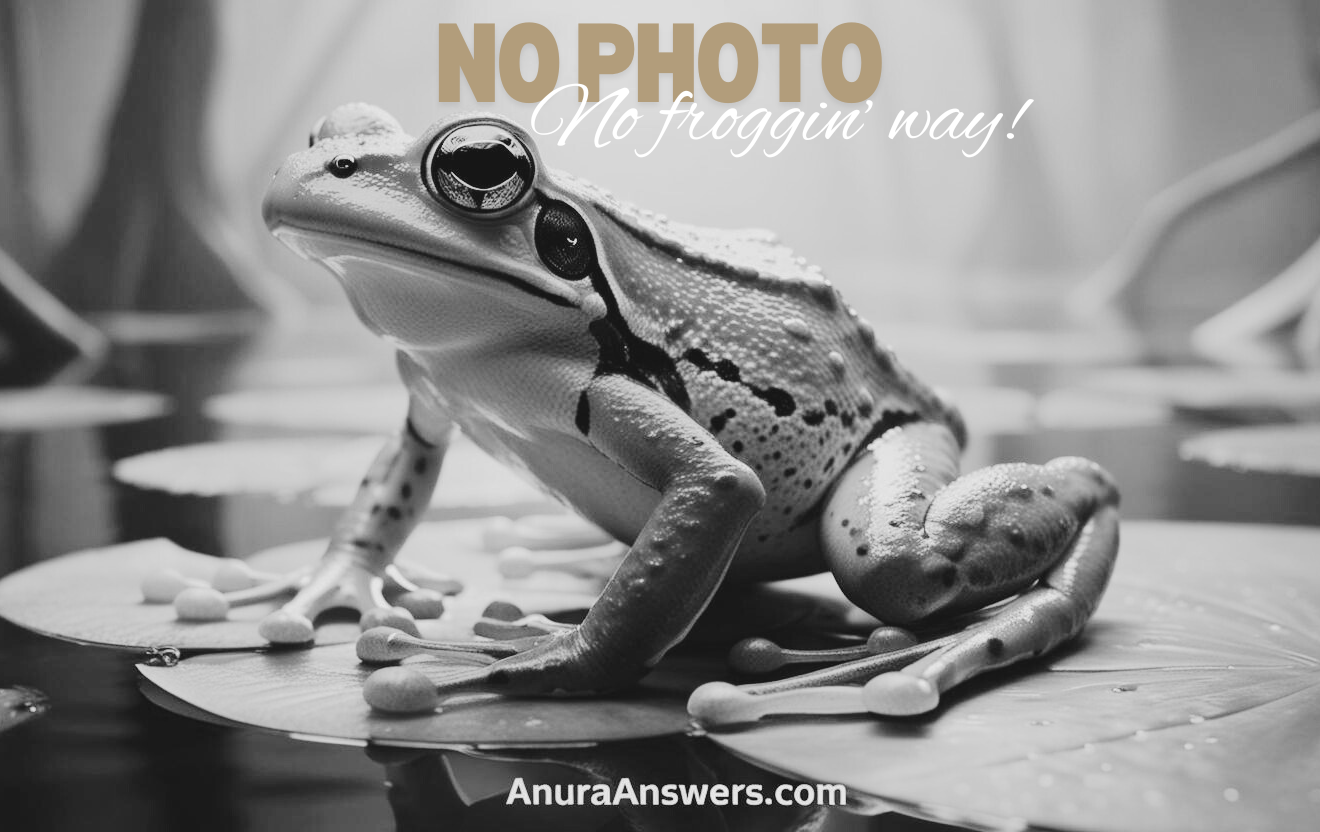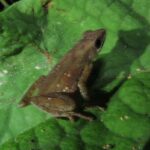- Exploring Breviceps branchi: The Enigmatic Desert Rain Frog of Southern Africa
- Taxonomy and Classification
- Natural Habitat: Life Among Namib's Coastal Sands
- Physical Characteristics: An Amphibious Desert Survivor
- Behavior and Life Cycle: Unique Survival Strategies
- The Ecological Role of Breviceps branchi
- Threats and Conservation Status: Guarding a Desert Treasure
- Cultural and Scientific Significance: More Than Just a Charming Squeak
- Conclusion: Celebrating and Protecting a Spectacular Amphibian Survivor
Exploring Breviceps branchi: The Enigmatic Desert Rain Frog of Southern Africa#
On the windswept dunes and scrubby plains of Namibia’s coastal deserts lies the charmingly peculiar Breviceps branchi, known more commonly as the Desert Rain Frog. At first glance, this peculiar amphibian defies our conventional ideas of what a frog should be. Instead of lush wetlands brimming with lilies and water bodies echoing with rhythmic calls, this small, round-bodied amphibian thrives among shifting sands and fog-drenched mornings. Famous on social media for its squeaky, adorable cry—an endearing sound reminiscent of a squeezing toy—the desert rain frog has quietly become one of nature’s most delightfully odd ambassadors.
Its distinct call brought the species unexpected fame, but Breviceps branchi boasts a fascinating biology, ingenious adaptation strategies, and faces critical conservation challenges that deserve deeper appreciation. Step into the sandy realms of a frog no larger than a ping-pong ball, whose survival secrets hold intriguing scientific insights and important ecological lessons.
Taxonomy and Classification#
Belonging to the family Brevicipitidae, the Desert Rain Frog bears the clear scientific designation Breviceps branchi. The genus name “Breviceps” translates roughly as “short head,” highlighting a characteristic appearance: a distinctly rounded and compact head, lacking the elongated shape typical of more familiar frogs. The species epithet “branchi” honors the South African naturalist John Branch, recognizing his early explorations and pivotal contributions to amphibian research in southern Africa.
Sibling to related species within its genus, the Desert Rain Frog shares ancestry with other Breviceps species but carves a unique ecological niche. Each species within Breviceps has evolved specific, often unusual adaptations to its immediate environments, but none quite as striking as those that help this coastal desert dweller navigate its harsh, arid home.
Natural Habitat: Life Among Namib’s Coastal Sands#
Unlike typical amphibians, which seek freshwater streams or humid jungles, the Desert Rain Frog has perfected survival in an extreme, often hostile realm: the sandy deserts and fog-covered coastal sands of Namibia and southern Angola. This diminutive amphibian has adapted specifically to survive the challenging climate of the Namib Desert’s coastal belt—an ecosystem shaped by cold veils of mist rolling in from the Atlantic Ocean.
The Namib ecosystem is a barren yet spectacular landscape made of rolling dunes, sandy flats, and isolated vegetation patches nourished by coastal fog rather than heavy rainfall. Here, amidst tussocks of sedge grass and succulent shrubs, Breviceps branchi carves its subterranean refuge. The frog spends daylight hours burrowed underground, emerging only at night or early dawn, when moisture is higher due to condensation from cool, marine fog banks.
The desert rain frog takes full advantage of the regularly occurring fog, a life-greeting moisture source in such an arid landscape. While water bodies may be rare or nonexistent, fog droplets accumulating on sand granules seep downward, creating microhabitats saturated enough for survival and breeding. This remarkable reliance on fog moisture has rendered the species exquisitely specialized—an elegant illustration of evolutionary adaptation at work in arid ecosystems.
Physical Characteristics: An Amphibious Desert Survivor#
The most notable trait of Breviceps branchi is its unmistakable physical appearance. Measuring scarcely more than 4 to 6 centimeters at full size, the desert rain frog defies traditional amphibian shapes by presenting a globular, almost spherical body that seems humorously disproportionate. Sporting a flattened face, rounded eyes, and unusually short limbs, its appearance has often been affectionately described as “a tiny grumpy pancake.”
Its shape serves an essential function: survival underground. The Desert Rain Frog constructs burrows as protection from extreme daytime temperatures, predators, and desiccation. Its stubby legs and robust, muscled body allow swift digging and efficient maneuvering beneath the sand layer. This body shape also reduces surface area, helping to minimize water loss—a critical strategy vital for an amphibian isolated in desert conditions.
The coloration of the Desert Rain Frog further aids its desert camouflage. Sporting a sandy, beige, or pale brown shade, often subtly speckled or textured, the frog blends seamlessly with its surroundings, making detection by predators extremely difficult. Such cryptic coloration is crucial in the open and exposed coastal sands it calls home.
Behavior and Life Cycle: Unique Survival Strategies#
A Diet Perfectly Adapted to Desert Scarcity#
Insects and spiders that inhabit Namibia’s sandy shores provide the primary sustenance for Breviceps branchi. After dusk, the Desert Rain Frog emerges from its burrow, quietly surveying sand surfaces for beetles, ants, termites, and other small arthropods. This nighttime foraging reduces risks from diurnal predators and takes advantage of higher humidity, conserving precious water reserves.
Vocalizations and Reproduction Amid the Fog#
Perhaps the most famous aspect of the Desert Rain Frog—its distinctive high-pitched squeak—is not just charming but serves a vital purpose. Male frogs emit these unique calls to attract females during breeding seasons, signaling readiness and vitality. Interestingly, unlike many amphibians that rely on water bodies for reproduction, Breviceps branchi reproduces completely terrestrially.
Females deposit their small clutch of approximately 12 to 20 eggs in damp, subterranean nests deep within the sand. Remarkably, the embryos develop directly into miniature froglets, skipping tadpole stages common among other amphibians, a key adaptation given the absence of reliable surface water in their desert habitat. Parental care remains limited but critical; adult frogs carefully select nest conditions ensuring sufficient moisture, temperature, and shelter from predators, thus amplifying offspring survival chances.
The Ecological Role of Breviceps branchi#
While diminutive in size, the desert rain frog plays a pivotal ecological role. Primarily an insectivorous predator, it helps maintain balance within the Namib Desert ecosystem by controlling arthropod populations. Simultaneously, frogs serve as prey to various larger creatures such as jackals, owls, and snakes, highlighting their integral part in the food web dynamics that underlie desert biodiversity.
Furthermore, the species’ extreme specialization and reliance on coastal fog ecosystems position it as a vital biological indicator, reflective of the Namib Desert’s environmental health. Changes in frog populations—whether growth or decline—can signal shifts in fog regularity, moisture patterns, and climate trends, influencing conservation and climate action strategies throughout the region.
Threats and Conservation Status: Guarding a Desert Treasure#
Classified as “Vulnerable” by the International Union for Conservation of Nature (IUCN), the Desert Rain Frog faces numerous threats exacerbated by climate change, habitat destruction, and human development. The unique coastal habitats it relies upon are increasingly degraded through mining, infrastructure expansion, off-road vehicle recreation, and pollution.
Climate change adds complications by altering the frequency and intensity of life-giving coastal fog. Reduced fog incidence could drastically impact moisture availability, jeopardizing delicate reproductive events and overall survival. Conservationists urge protection initiatives emphasizing habitat conservation, environmental monitoring, and stricter regulatory oversight of human activities in Namibia’s coastal areas.
Cultural and Scientific Significance: More Than Just a Charming Squeak#
Culturally, while lesser-known in folklore compared to other African amphibians, the Desert Rain Frog has recently risen to surprising prominence, becoming a global internet sensation due to viral videos highlighting its squeaky defensive calls. Scientifically, its unique adaptations serve as a powerful illustration of evolutionary biology, providing exceptional insights into how amphibians can adapt to hyper-arid environments—a valuable guide for research into survival strategies amid climate challenges.
Conclusion: Celebrating and Protecting a Spectacular Amphibian Survivor#
Breviceps branchi, the lovable, resilient Desert Rain Frog, captures hearts and imagination alike, symbolizing nature’s ability to thrive under astonishingly challenging conditions. More than its squeaky call, more than its irresistible charm, the frog underscores the importance of protecting delicate ecosystems and understanding evolutionary processes. By celebrating this tiny amphibian, we deepen our connection to Earth’s intricately woven web of life, reaffirming the urgency of thoughtful conservation action. Let us take inspiration from this unlikely desert dweller, pledging to preserve the fragile wonder hidden in Namibia’s shifting sands.







